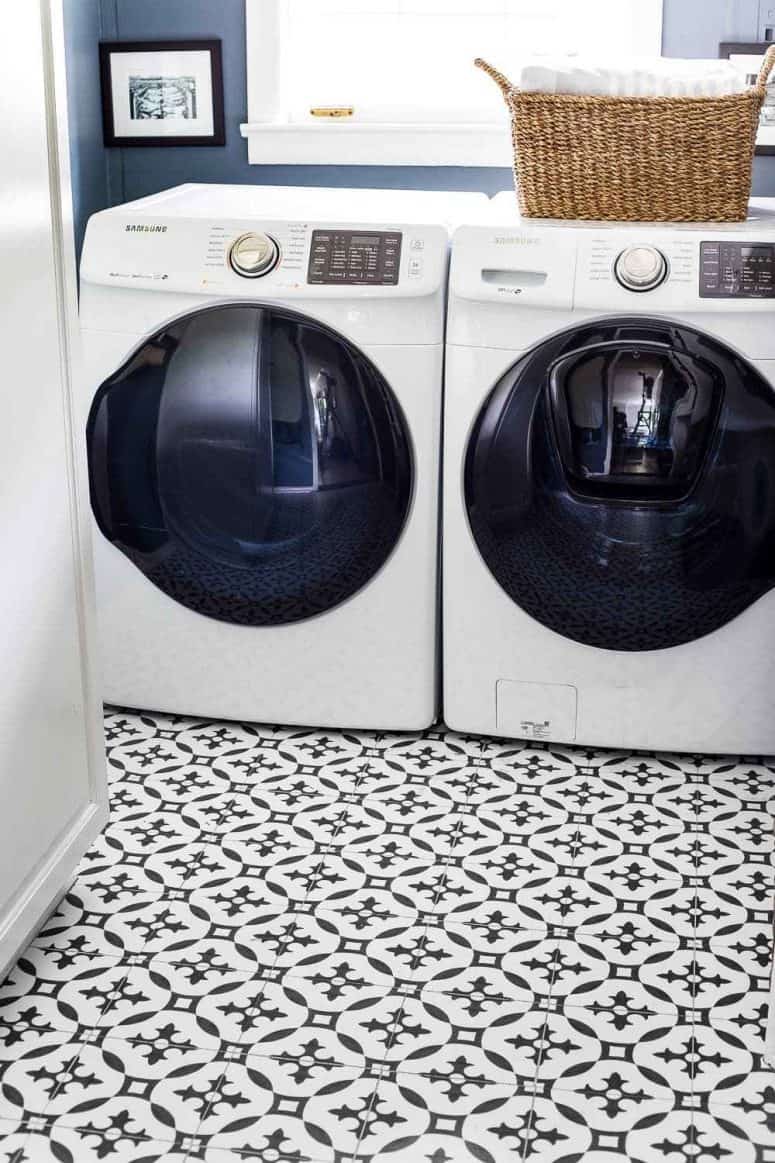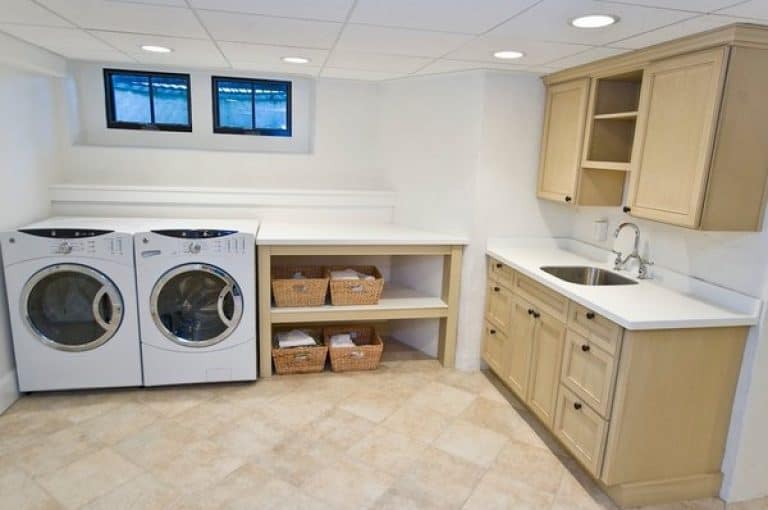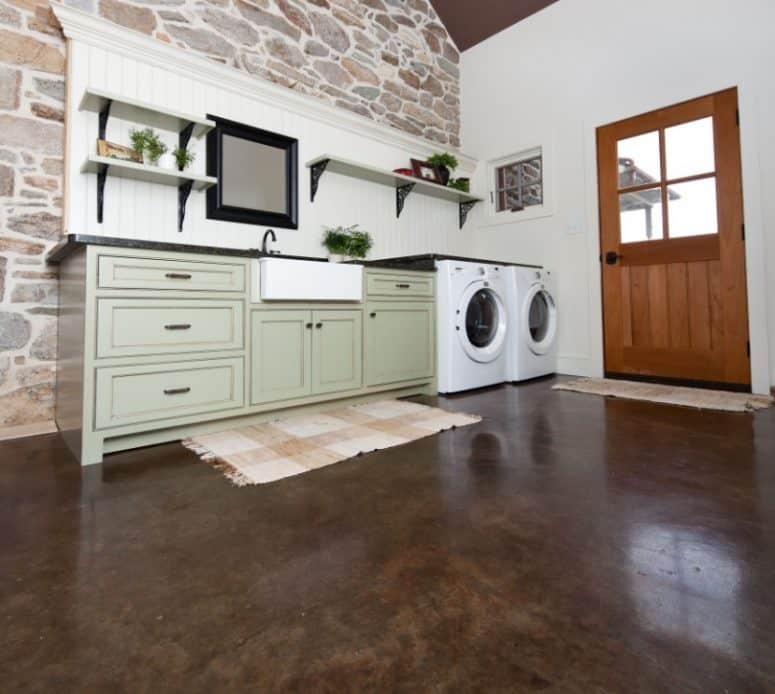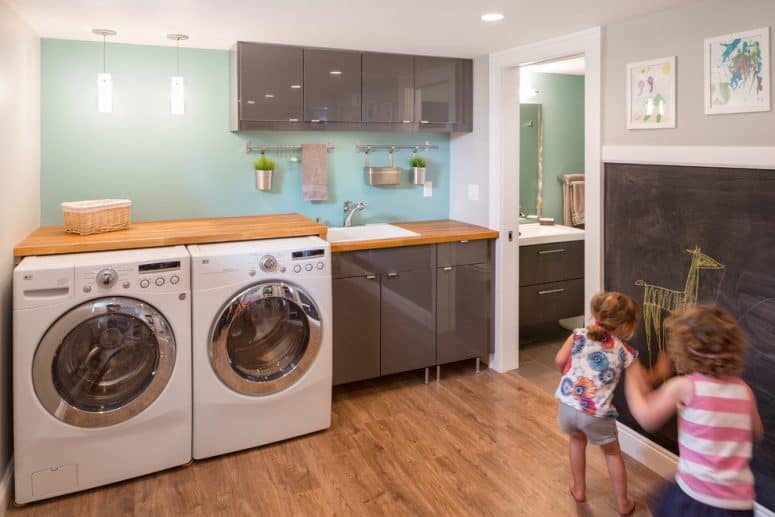Laundry is a daily chore that requires a dedicated space, commonly known as the laundry room. This room is equipped with appliances to clean various items, including clothes and shoes. Given the nature of laundry, which involves water, detergents, and dirt, choosing the right flooring is essential.
Opting for the wrong flooring in your laundry room can lead to numerous issues. It may result in frequent floor replacements or cause the floor to appear worn and unappealing. Since the laundry room deals with spills, splashes, and potential leaks, the flooring must be able to withstand moisture and be easy to clean.
Selecting a suitable flooring option that is durable, water-resistant, and easy to maintain is crucial for a functional and visually appealing laundry room. By choosing wisely, you can avoid unnecessary expenses and ensure that your laundry room flooring remains in good condition for the long term.
Things to Consider in Choosing Laundry Room Flooring
Laundry activities encompass various tasks, including sorting clothes, using detergents and cleaning liquids, and washing them either manually or in a washing machine using water. However, these activities can sometimes lead to accidents, such as water source blockages, flooded machines, or spilled detergents on the floor.
Before selecting a flooring option for your laundry room, it’s important to consider the following factors:
- Water-resistant: Ideally, the flooring should be waterproof, but at the very least, it must be able to withstand exposure to water and moisture. In a laundry room, water spills are common, and having a flooring material that can resist damage from repeated water exposure is crucial.
- Easy maintenance: With spills, splashes, and potential dirt in the laundry room, it’s important to choose a flooring material that is easy to clean and maintain. Difficult-to-clean floors can lead to messy and unhygienic conditions, including the growth of mold or mildew. It’s important to select a flooring option that can be easily wiped or mopped clean.
- Durability: Given the presence of water, moisture, and chemical substances in the laundry room, the chosen flooring material should be durable and able to withstand these elements. Repeated damage to the flooring would be inconvenient and costly, so opting for a durable option is essential.
- Stain resistance: Detergents and cleaning liquids may contain chemicals that can potentially stain the flooring. Therefore, selecting a stain-resistant flooring material is a wise decision. Additionally, flooring that is less sensitive to chemicals and stains will be easier to maintain and keep looking clean.
By considering these factors, you can choose a suitable flooring option for your laundry room that can withstand the demands of laundry activities while remaining visually appealing and easy to maintain.
Best Flooring Options for Laundry Room
When it comes to flooring for a laundry room, you need to be mindful of the presence of moisture and sensitivity to certain substances. While there are options available, it’s important to be cautious as some may come with risks and are better to avoid.
Here are five highly recommended flooring choices for your laundry room.
1. Vinyl

2. Ceramic Tile

Ceramic tiles, available in various sizes and shapes, can be either glazed or unglazed.
Glazed ceramic tiles have a shiny, smooth surface, while unglazed tiles offer more texture and an earthy appearance, providing a tactile experience.
The versatility of ceramic tile flooring is evident in the wide range of designs, patterns, and colors available, allowing you to choose the perfect match for your laundry room’s aesthetic.
Ceramic tiles are an excellent choice for the laundry room because they are completely waterproof. Even in the event of a major flood, ceramic tiles remain undamaged.
When it comes to stains and maintenance, ceramic is highly resilient. While the color may fade over time, it takes many years for this to occur. Additionally, ceramic tiles are resistant to staining and are easy to clean.
However, it’s important to note that ceramic tile installations have grout lines between each tile. This requires regular sweeping and mopping to keep the grout clean and maintained.
Installing ceramic tiles can be a somewhat challenging task as it involves using cement, water, and sand. The surface on which the tiles are installed must be even to prevent cracking. If you’re not a skilled handyman, it’s best to seek professional assistance for installation.
Another consideration is that ceramic flooring can be slippery, especially when wet. Take caution when dealing with cleaning liquids or any spills to prevent accidents. Wearing anti-slip sandals in the laundry room is a sensible precaution.
3. Natural Stone

4. Concrete

5. Wood Flooring and Its Alternatives

Let’s delve into the topic of wood flooring in the context of a laundry room. Wood flooring and laundry rooms present some challenges that make them less ideal for each other when compared to other flooring options.
First, let’s consider solid hardwood flooring. While it can be installed in a laundry room, it is highly sensitive to moisture. The natural composition of solid hardwood makes it prone to shrinking and damage when exposed to water or excessive moisture.
Now, let’s discuss the alternatives: laminate and engineered hardwood. Laminate flooring has a core made of natural materials that are also sensitive to moisture, and its wear layer is not designed to withstand water flooding. It can handle minor water spills that are promptly wiped away.
On the other hand, engineered hardwood has a veneer layer that can delaminate if exposed to excessive water. Once delamination occurs, the entire surface layer can be compromised.
There are some precautions you can take to strengthen wood flooring in a laundry room. For instance, you can use adhesive to secure the click-and-lock edges of laminate or engineered wood planks, reducing the risk of warping. Additionally, using rugs or mats to cover the flooring can provide some protection.
However, it’s important to recognize that the risk of water damage still remains. If you’re willing to put in the effort for regular and meticulous maintenance to mitigate these risks, then wood flooring could be an option. However, it’s understandable that not everyone may be enthusiastic about the potential need for repairs and maintenance in the future.
Which One You Gotta Choose?
When it comes to choosing the best flooring for your laundry room, it’s essential to consider the specific needs and characteristics of your own space. Every house has a different laundry room size and equipment setup, and homeowners have different washing habits as well.
If you’re looking for flooring options that are completely waterproof, then vinyl flooring, natural stone, ceramic tile, and concrete flooring are excellent choices. With these options, you can rest assured that water won’t damage your flooring. However, it’s important to note that each type of flooring has its own level of sensitivity, which may vary depending on your preferences and requirements.
Wood flooring, such as solid hardwood, engineered hardwood, and laminate, can also be considered for a laundry room. While they are not inherently waterproof, it is still possible to install them in this space. However, it’s crucial to be aware of their vulnerability to water. This means taking extra precautions and providing diligent maintenance to protect the wood flooring from potential water damage.
Ultimately, the decision on which flooring option to choose for your laundry room should be based on your comfort level, lifestyle, and willingness to invest in the necessary maintenance and care to keep the flooring in good condition.